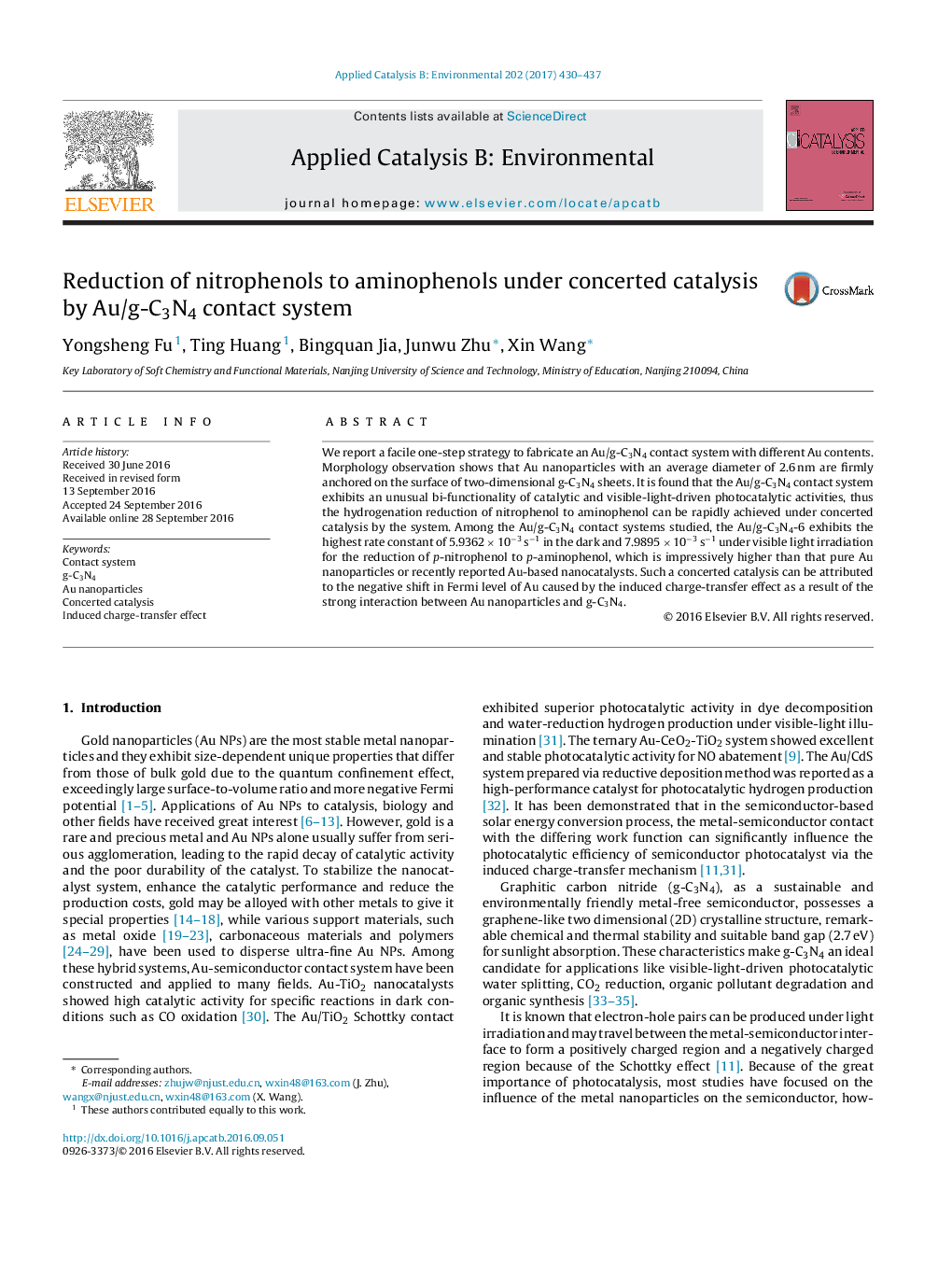| Article ID | Journal | Published Year | Pages | File Type |
|---|---|---|---|---|
| 6454873 | Applied Catalysis B: Environmental | 2017 | 8 Pages |
â¢Au/g-C3N4 contact system exhibits both catalytic and photocatalytic activity.â¢Reduction of nitrophenol can be achieved under concerted catalysis by Au/g-C3N4.â¢Effectively concerted catalysis is attributed to the negative shift in Fermi level of Au.
We report a facile one-step strategy to fabricate an Au/g-C3N4 contact system with different Au contents. Morphology observation shows that Au nanoparticles with an average diameter of 2.6Â nm are firmly anchored on the surface of two-dimensional g-C3N4 sheets. It is found that the Au/g-C3N4 contact system exhibits an unusual bi-functionality of catalytic and visible-light-driven photocatalytic activities, thus the hydrogenation reduction of nitrophenol to aminophenol can be rapidly achieved under concerted catalysis by the system. Among the Au/g-C3N4 contact systems studied, the Au/g-C3N4-6 exhibits the highest rate constant of 5.9362Â ÃÂ 10â3Â sâ1 in the dark and 7.9895Â ÃÂ 10â3Â sâ1 under visible light irradiation for the reduction of p-nitrophenol to p-aminophenol, which is impressively higher than that pure Au nanoparticles or recently reported Au-based nanocatalysts. Such a concerted catalysis can be attributed to the negative shift in Fermi level of Au caused by the induced charge-transfer effect as a result of the strong interaction between Au nanoparticles and g-C3N4.
Graphical abstractDownload high-res image (189KB)Download full-size image
